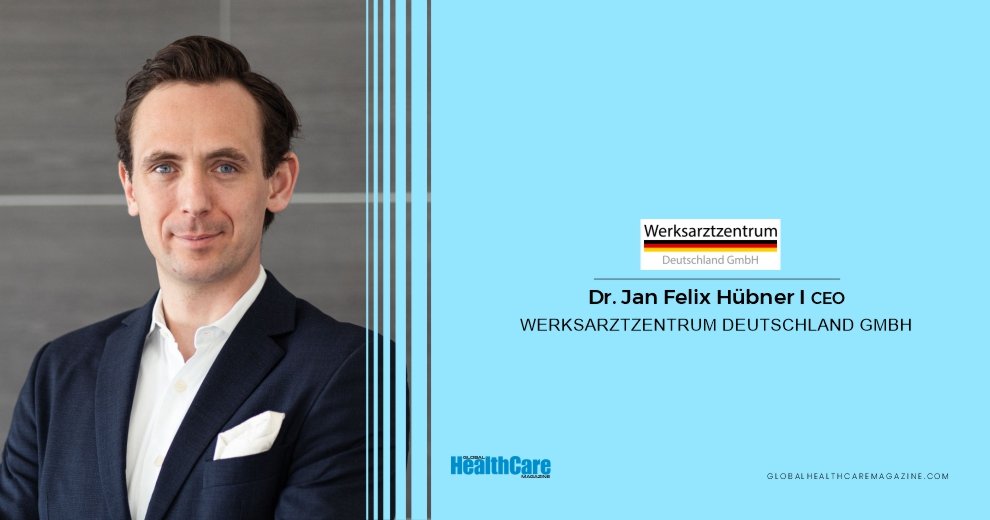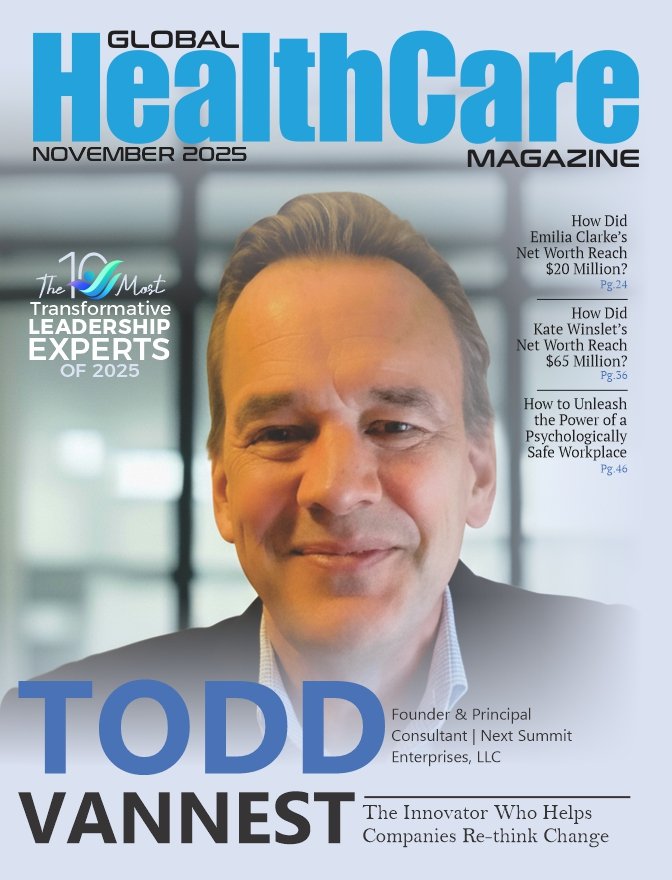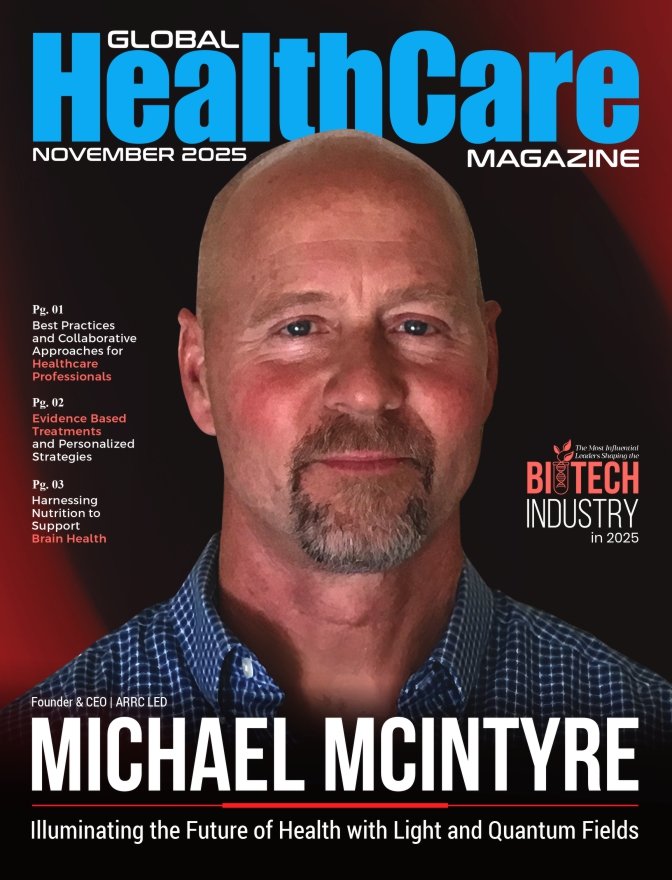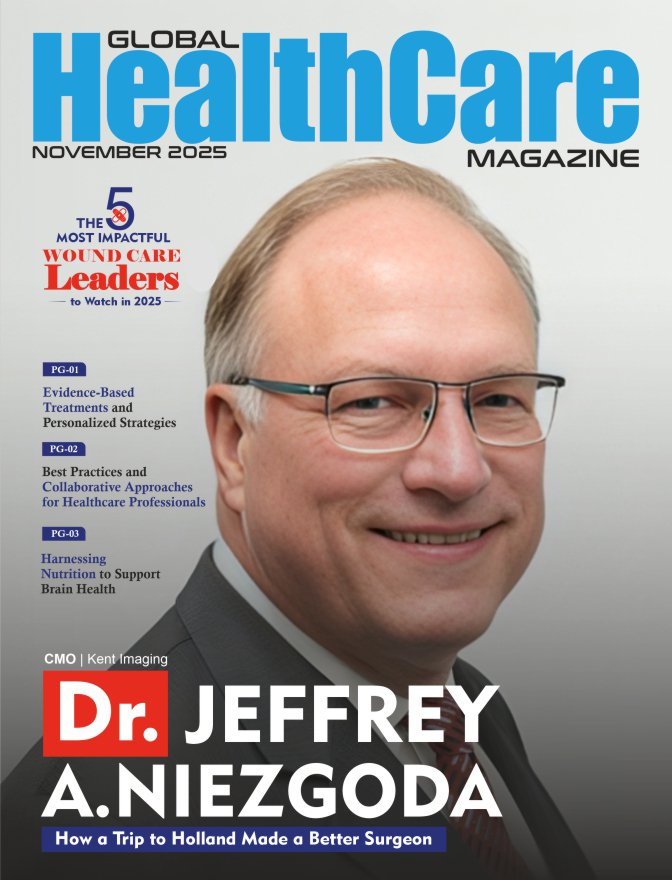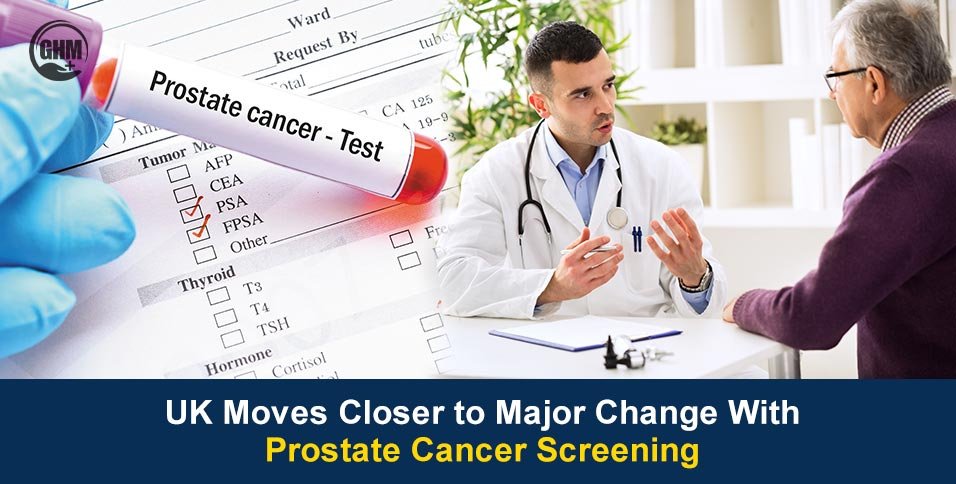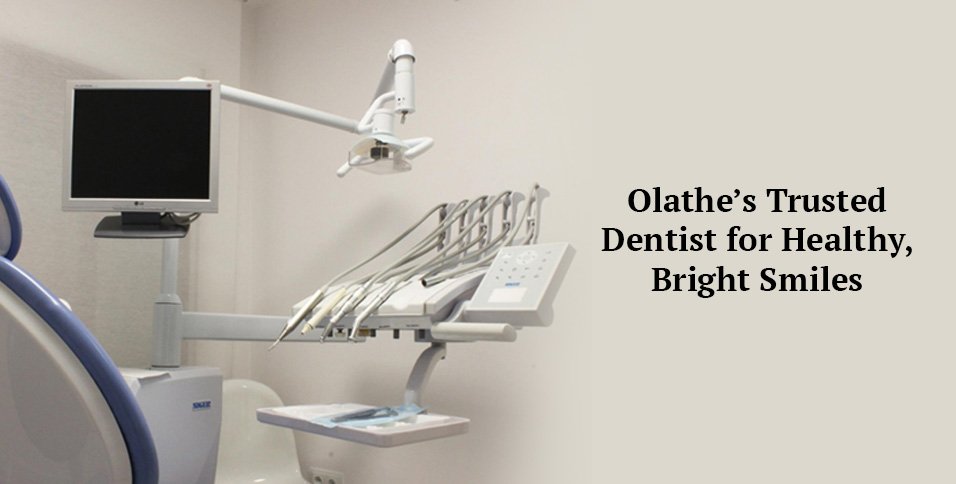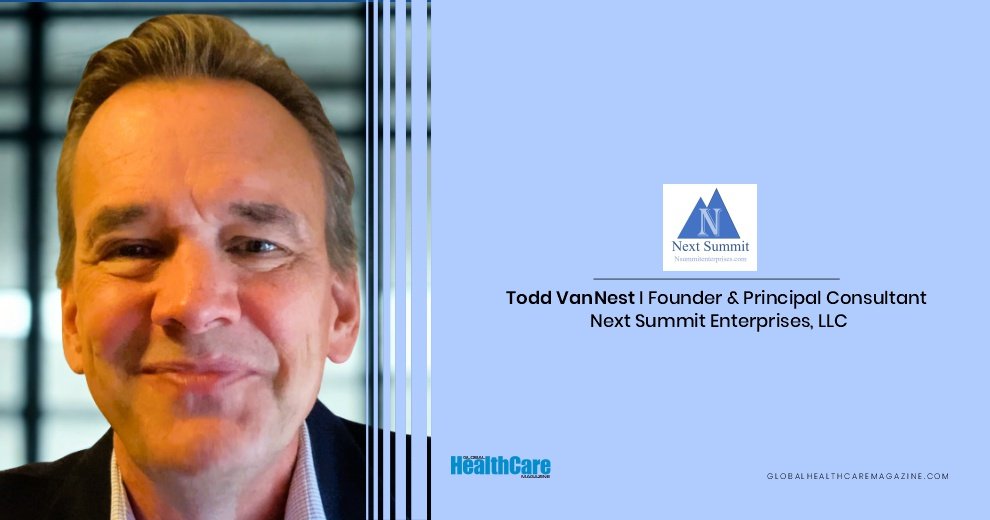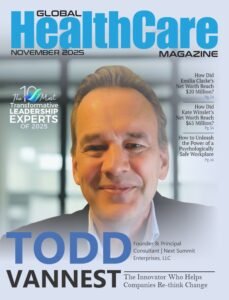In today’s business world, health at work often comes up only in times of crisis—a sudden injury, a stress-related breakdown, or a report that flags rising absenteeism. But what if workplace health wasn’t just damage control? What if it could be a strategic lever for performance, resilience, and long-term success? That question sits at the heart of Dr. Jan Felix Hübner’s work—and it’s the question that first nudged him off the usual medical path.
Before stepping into the CEO role at Werksarztzentrum Deutschland GmbH, Dr. Hübner’s story wound through some unlikely places. He studied medicine at Ruhr University Bochum and economics at the University of Hagen, a combination that doesn’t show up often in traditional medical careers. But for him, the blend made sense. Health didn’t live in a silo; it touched people, systems, and the economy. That perspective only deepened through international training in places as varied as India, Switzerland, Kenya, and Ecuador.
Early roles in academic medicine and healthcare consulting helped sharpen his view of how deeply health and organizational outcomes were tied together. But it was the recurring gaps in occupational health—its reactive nature, its rigid processes—that stirred something deeper. He didn’t just see missed opportunities. He saw a system in need of reinvention.
Since 2020, Dr. Hübner has been at the helm of Werksarztzentrum Deutschland, one of the largest providers of occupational health services in Germany. His focus is clear: bring digital transformation to a field that has long lagged behind, and in doing so, reframe how companies think about the health of their people. Not as a checkbox, but as a catalyst.
Leading Change from the Inside Out
At Werksarztzentrum Deutschland GmbH, Dr. Jan Hübner isn’t just running a company—he’s reshaping how occupational health fits into the modern workplace. As CEO, he wears many hats, but three stand out: shaping strategy, pushing digital innovation, and making sure day-to-day operations deliver what they promise. That last part, he’ll tell you, is often where transformation either takes root or falls apart.
When he stepped into the role, the goal was ambitious: position the company as Germany’s leading force in digital occupational health. That meant more than just building new tools. It meant rethinking how services were delivered to over half a million employees across the country. Under his leadership, the company didn’t just grow—it adapted. It introduced telemedicine options tailored for flexible and remote work setups, a move that now feels obvious but required foresight at the time. His team rolled out hybrid models that blend on-site visits with digital care, offering companies a personalized, practical approach to workplace health.
The common thread through all these changes is clear: every decision centers on the client. “We built our culture around two things,” he often says. “Client centricity and evidence-based practice.” That combination has helped the company stay nimble, even in a field known for being cautious. By anchoring innovation in research and real-world results, Dr. Hübner has kept the focus on delivering occupational health care that’s not only efficient and compliant but also meaningful to the people who need it most.
Where Occupational Health Care Meets Convenience
The average person doesn’t think much about occupational health until a medical form lands in their inbox or a mandatory check-up appears on the calendar. But at Werksarztzentrum Deutschland, Dr. Jan Hübner and his team have flipped that experience on its head. Instead of health services that feel like an obligation, they’re building something that actually works for people—fast, flexible, and surprisingly human.
The company’s core offerings stretch far beyond basic medical exams. They handle everything from routine check-ups and risk assessments to more technical diagnostics for vision, hearing, and even stool samples—without needing employees to leave their desks. Telemedicine plays a central role here, making it easy for workers to reach medical professionals without long waits or travel time. For companies, that means fewer disruptions. For employees, it means care that fits into their day.
What really sets Werksarztzentrum Deutschland apart is how it blends technology with the kind of personal care that doesn’t usually show up on digital platforms. Need a return-to-work plan? It’s structured and ready. Looking to reduce absences? There’s a program for that. Want health records at your fingertips? It’s built-in. “We’ve created a system where support is available 24/7,” Dr. Hübner explains. “It’s not just about being efficient. It’s about making things easier—and better—for everyone involved.”
This mix of digital access and hands-on service has helped clients tackle compliance, reduce sick days, and streamline the kind of paperwork that once buried HR departments. It’s also pushed the company to the top of the market—one smart, simple step at a time.
Solving a Crisis with Smarter Tools
The challenge facing occupational health in Germany isn’t just looming—it’s already here. Companies are feeling the pressure in real time: longer waitlists for medical consultations, more employees calling in sick, and rising costs that eat into the bottom line. And the bigger picture is even more concerning. Germany is short by 42 million physician service hours, and nearly two-thirds of the country’s occupational doctors are set to retire by 2030.
Dr. Jan Hübner doesn’t mince words about it. “The traditional model simply can’t keep up anymore,” he says. The old way of delivering care—on-site only, paper-heavy, slow to scale—is buckling under the weight of today’s demands. But instead of treating that as a dead end, he sees it as an opening.
Technology, for him, isn’t just a tool. It’s the bridge between a broken system and one that actually works. Digital screenings, for example, help companies cut down on paperwork and save hours on coordination. Telemedicine connects employees to doctors faster, whether they’re at a desk in Berlin or a construction site in Bavaria. Integrated platforms keep records organized and accessible. And AI-powered scheduling tools make sure limited medical staff are allocated where they’re truly needed.
What Werksarztzentrum Deutschland has built isn’t a patch—it’s a new way forward. By combining digital services with traditional on-site consultations, the company helps clients close critical service gaps. Even companies with remote or hybrid teams stay covered. The goal isn’t just to survive the crisis. It’s to come out of it with a stronger, smarter approach to workplace health.
A Hybrid Model That Actually Works
In a world where most things are either digital or face-to-face, Dr. Jan Hübner has taken a different route—one that combines both, and not just for convenience’s sake. At Werksarztzentrum Deutschland, the hybrid model isn’t a buzzword. It’s a carefully built system that brings the best of technology and human care into one seamless experience.
Here’s how it plays out: Employees can book appointments, access health records, and complete screenings online, all without the usual back-and-forth. Telemedicine fills in the gaps for remote or decentralized teams, making quick medical consultations possible without travel or disruption. “It’s simple,” Dr. Hübner says. “We wanted to make care easy to reach, not something you had to chase down.”
But this model doesn’t stop at screens. The company still prioritizes in-person care through regular on-site check-up days and detailed, face-to-face assessments when needed. There’s also the Medical and Safety Service Center—a less visible but hugely impactful part of the system. This team is always the first point of contact for our clients and offers immediate support. For example, the MSSC steps in when employees are unwell, securing specialist appointments within 72 hours and helping them navigate the often-overwhelming return-to-work process. The result? A meaningful drop in absenteeism, better compliance, and more satisfied employees who feel supported, not sidelined. For employers, it means fewer gaps, fewer delays, and a workplace that’s built to handle the pace of change. It’s this mix—tech when it’s useful, people when it matters—that makes the model work.
Building Trust in a Digital Shift
Bringing technology into healthcare is never just about the tools—it’s about trust. In occupational medicine, where sensitive health data meets workplace regulation, that trust has to be earned every step of the way. Dr. Jan Hübner knows this well. While digital transformation is at the heart of Werksarztzentrum Deutschland’s model, it didn’t happen overnight—and it didn’t happen without pushback.
“People worry about privacy, and rightfully so,” he says. Employees want to know their medical information is safe. Practitioners want to be sure their expertise isn’t being sidelined by algorithms. And then there’s the quiet challenge that doesn’t always make headlines: digital literacy. If the tools are too complex to use, even the best ideas stall.
To move forward, Dr. Hübner and his team took a methodical approach. They built the system on strict GDPR-compliant protocols, giving clients and staff the assurance that data protection wasn’t negotiable. They also invested in user experience – to make the whole process easy to understand. The goal wasn’t to force adoption, but to build comfort and confidence.
At every turn, they made one thing clear: the tech isn’t here to replace doctors. It’s here to support them. “Digital tools must always focus on the people using them,” Dr. Hübner often says. That belief runs through the company’s culture, where continuous learning and openness are core values. For Werksarztzentrum Deutschland, digitalization works best when it strengthens—not substitutes—the physician’s role.
Milestones That Matter
For Dr. Jan Hübner, career milestones aren’t just numbers or headlines—they’re signals that the work is moving in the right direction. And if there’s one milestone that stands out, it’s this: under his leadership, Werksarztzentrum Deutschland has become Germany’s digital market leader in occupational medicine. That’s not a title the company declared for itself—it’s one that came through grit, scale, and results.
Each year, the company now performs over half a million medical assessments, reaching workers across industries and geographies. That kind of volume isn’t just about growth—it’s about reach and impact. Through the rollout of a full telemedicine platform and an integrated digital health record system, Dr. Hübner’s team has taken occupational healthcare from a slow-moving necessity to something fast, smart, and accessible.
Recognition has followed. In 2025, Werksarztzentrum Deutschland earned a place on Germany’s list of the Top 100 most innovative companies—a public nod to a private mission. “It’s not about awards,” he says. “It’s about setting new standards. We want to shape what occupational healthcare looks like in the next decade, not just the next quarter.”
For him, every milestone is part of a larger story—one where forward-thinking solutions meet real-world needs, and where innovation is measured by how well it serves people.
Looking Ahead
As work environments evolve, so does the role of occupational medicine. Dr. Jan Hübner sees a future shaped by smart, proactive care—where data, digital tools, and personalized support help prevent problems before they start. Hybrid models that combine on-site presence with digital flexibility will become the norm, making healthcare more consistent across locations.
But for him, it’s not just about going digital. “The real challenge,” he says, “is applying technology responsibly—so it strengthens care, not complicates it.” In his view, the next decade will be defined by how well occupational health systems can balance innovation with impact.
What’s Next
Looking ahead, Dr. Jan Hübner is focused on scaling what already works. Werksarztzentrum Deutschland aims to make its digital platform even more accessible and intuitive—so that companies of any size can manage occupational health with ease and confidence.
But healthcare isn’t the only frontier. He’s also setting his sights on occupational safety, a space facing many of the same hurdles: staff shortages, outdated systems, and compliance headaches. “There’s real potential to raise the standard here too,” he says. And true to form, he’s not waiting for change—he’s building it.
Balancing Work and Life
For Dr. Jan Hübner, work-life balance is an ongoing journey, not a destination. He finds energy in outdoor activities, sports, and, most importantly, spending time with his family. Recently, the arrival of his second son has brought even more joy to his life. “Being a CEO and a devoted father can go hand in hand,” he says, aiming to set an example for his team that personal fulfillment and professional success don’t have to be mutually exclusive.
Advice for Leaders
Dr. Jan Hübner’s advice for healthcare leaders is simple yet profound: “Embrace innovation with an open mind, but never lose sight of the human element.” He emphasizes that digital solutions should address real-world challenges and support—not replace—the expertise of medical professionals. His key recommendation is to engage teams early, address concerns transparently, and, above all, keep the patient’s well-being at the center of every decision.
Quotes
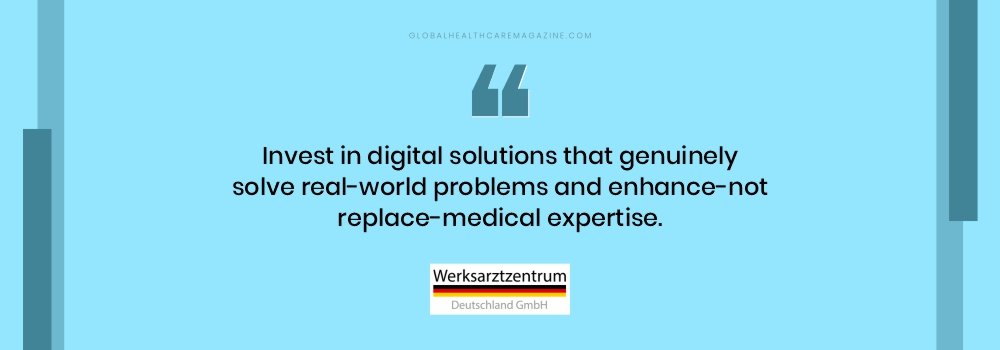
Also Read: Transforming Workplace Healthcare: The Most Influential Leaders in Healthcare, 2025

